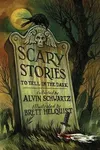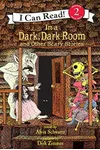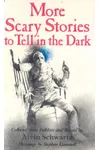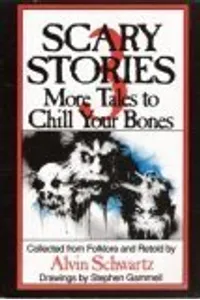Step into the chilling world of Scary Stories To Tell In The Dark, where ghostly tales and eerie folklore await to send shivers down your spine! This iconic children’s horror series by Alvin Schwartz, paired with Stephen Gammell’s haunting illustrations, has terrified and thrilled young readers since the 1980s, becoming a cultural touchstone for spooky storytelling.
With over seven million copies sold, these collections of short, spine-tingling stories draw from urban legends and folklore, making them perfect for campfires or late-night read-alouds. Ready to explore the shadowy corners of this beloved series? Let’s dive in!
How Scary Stories To Tell In The Dark Began
Alvin Schwartz, a folklorist and writer, crafted Scary Stories To Tell In The Dark by delving into American oral traditions. Inspired by tales passed down through generations, Schwartz began collecting creepy stories in the late 1970s. His goal? To create a series that thrilled young readers while preserving the eerie charm of folklore. Paired with Stephen Gammell’s nightmarish, ink-splattered illustrations, the first book hit shelves in 1981, instantly captivating audiences with its blend of horror and history.
The Heart of Scary Stories To Tell In The Dark
The series comprises three main books, each a collection of short horror stories. Scary Stories To Tell In The Dark (1981) introduces classics like ‘The Big Toe,’ where a boy’s gruesome discovery leads to a ghostly encounter, and ‘The Red Spot,’ a skin-crawling tale of spiders. More Scary Stories To Tell In The Dark (1984) ups the ante with ‘The Drum,’ a story of sibling rivalry and supernatural consequences. Scary Stories 3: More Tales to Chill Your Bones (1991) rounds out the trilogy with ‘Harold,’ a terrifying tale of a scarecrow with a mind of its own.
Themes of vengeance, the supernatural, and the unknown weave through the series, often set in vague, timeless small-town America. Schwartz’s conversational style mimics oral storytelling, making each tale feel like a secret whispered in the dark. Gammell’s grotesque, dreamlike illustrations amplify the horror, turning simple stories into unforgettable nightmares. Whether it’s ghosts, cursed objects, or monstrous creatures, the series taps into primal fears with a playful yet unsettling tone.
Why Scary Stories To Tell In The Dark Resonates
Scary Stories To Tell In The Dark has left an indelible mark on children’s horror, sparking a love for spooky tales among generations. Its blend of folklore and fright made it a staple in classrooms and libraries, despite occasional bans for its grim content. The 2019 film adaptation and renewed interest in horror anthologies prove its timeless appeal. Fans cherish the series for its ability to scare without overwhelming, offering just the right dose of terror for young readers.
The series’ cultural impact extends beyond bookshelves, inspiring countless sleepovers filled with flashlight-lit storytelling. Its legacy lies in empowering kids to face fear through humor and imagination, cementing its place as a gateway to horror.
- Publication Years: 1981, 1984, 1991
- Number of Books: Three
- Sales: Over seven million copies worldwide
- Notable Adaptation: 2019 film produced by Guillermo del Toro
Grab Scary Stories To Tell In The Dark and dive into a world of ghostly folklore and heart-pounding chills! Perfect for horror fans young and old, this series promises thrills that linger long after the last page.



